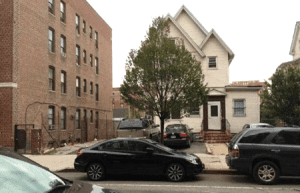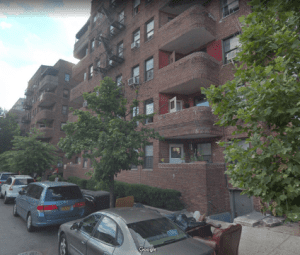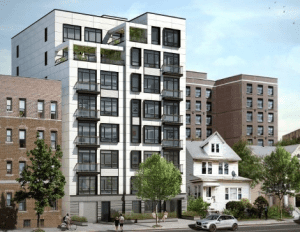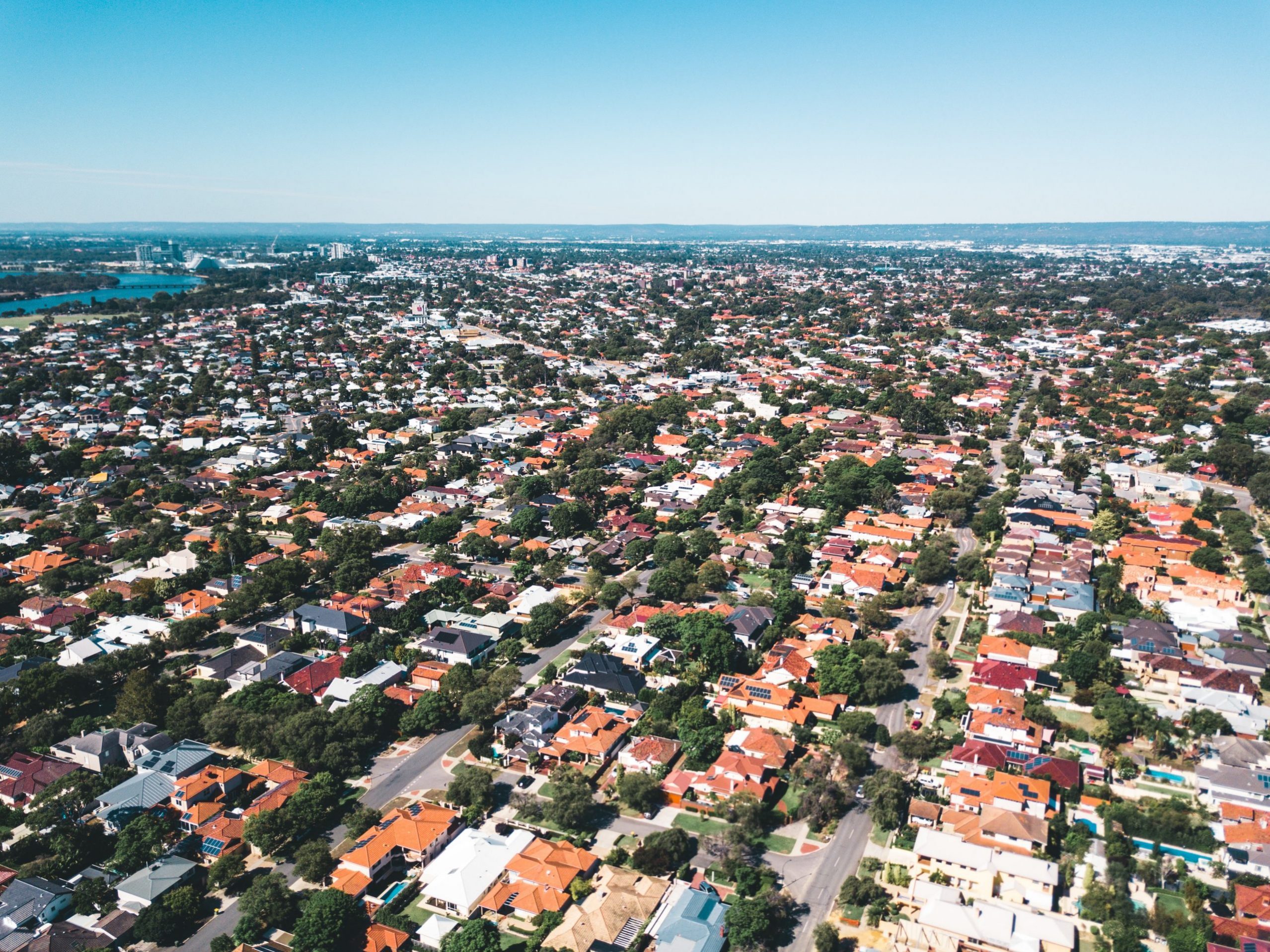I would not say that I enjoy challenging widely held assumptions, but I consider it a useful thing to do, particularly when I believe that they are based on faulty or questionable assumptions. In the course of doing so, I may get some things wrong, and clearly, quite a few readers of my most recent article, “More Housing Could Increase Affordability—But Only If You Build it in the Right Places,” felt I got a great deal wrong. Fortunately for my self-esteem, about the same number commended me for getting it right.
I thank everyone who commented with respect, and I want to address some of the criticisms. In so doing, I have tried to identify and address the issues broadly rather than, for the most part, respond to individual comments.
First, I need to stress that I never said that one should not work for zoning reform and—where appropriate—greater density in central cities. On the contrary, every city can do a better job of creating development opportunities, both for the market and for lower-income people. But for a variety of reasons that I spelled out, I concluded that the extent of what zoning changes will achieve in terms of affordable housing is very limited, particularly in hot-market cities like San Francisco. They will at best make a modest dent in the need—and, depending on what is removed in the process—could have counterproductive effects.
I also did not say that San Francisco or any other city is built out. There’s no such thing. The idea that a place can ever be “built out,” in the sense that it cannot accommodate any more development, is an utter absurdity. Redevelopment is a constant in cities, ever since ancient Babylon. The term should be stricken from the planning vocabulary. What I said was that it was built up. What that means is, as a quick visit to Google Earth will make clear, that every (or nearly every) buildable parcel in the city already has something on it that serves some function, and that one can only redevelop that parcel by taking away what’s already there, whether it’s a single-family home, a storefront, or a small factory. That’s a fact. What weight one gives it, of course, depends on one’s perspective and priorities.
That said, here are my thoughts on what seem to be the main critiques of my article:
- Encouraging suburban development of affordable housing would have negative environmental, social, and economic consequences.
Is suburban development all bad? A few people talked about the pernicious effects of suburban development—such as increased greenhouse gases from longer commutes and lack of transit, as well as unequal access to the cultural amenities of urban areas. Let’s begin with people’s journey to work. This critique misses an important but little appreciated reality about American cities. In most American cities, the majority of employed central city residents already work in the suburbs, not in the city.
Data from the 2017 Longitudinal Employer-Household Dynamics database showed that of 167,000 workers who live in Minneapolis, only 68,000 work within the city limits. However, 99,000, or roughly three out of every five workers, commute to jobs in the suburbs. In Baltimore, 82,000 people work in the city, and 112,000 commute to the suburbs. In Dayton, Ohio, a smaller city, only 11,000 people work in the city, while 31,000 commute to the suburbs. Enabling lower-wage workers to move to suburban communities closer to where they already work might well lower their commuting time, reduce their commuting costs, and in the process improve their quality of life. And, if we created higher-density clusters of population in the suburbs, that would make it easier to create true regional transit systems.
Along those lines, to argue that the quality of life in suburbs is inherently worse than in central cities bespeaks a narrow, almost solipsistic perspective. That is undoubtedly the opinion of the thousands of 20-something college graduates who have flocked to increasingly lively urban downtowns for the past two decades, although the potential future effects of COVID-19 on that migration are impossible to predict. It is not necessarily the opinion of most other people, such as most child-rearing families and older people. There are many reasons why suburban growth has continued unabated during the last couple of decades while central cities have revived. While I acknowledge the role of racism and classism in suburban flight, a major driver of that continued growth is that many people, Black and brown as well as white, feel the suburbs offer them a better quality of life. I would never force anyone to live in the suburbs, but see no reason why we should put the suburbs down as a vast wasteland, or continue to allow exclusionary zoning to deny suburban options to people who want to move there, but have less money and wealth.
I share many readers’ concern about the effects of development on the environment, especially in today’s age of rampant climate change. But we need to start by realizing that suburban greenfield development is going on all around us, with single-family houses that are steadily getting larger and being built on larger lots, further away from the heart of their region. That is the crux of the problem, but to the best of my knowledge, with the possible exception of Portland, Oregon, no American region makes any serious effort to control this process, nor does it seem likely that any will do so in the foreseeable future.
However, when I talk about the importance of focusing on the suburbs, I’m not arguing that we should continue the process of low-density sprawl ad infinitum, rather that we should increase the density of what’s already largely developed.
And we must also recognize that if we want to provide decent housing for everyone at all income levels in areas with strong housing demand, like Seattle, Washington, or San Francisco, we will need to build more housing as well as reuse more non-residential buildings for housing in those areas. The best way to address this is by changing the development paradigm, by allowing suburban development at significantly higher densities, creating significant numbers of affordable housing units, and linking future development to transit. The cost of land in high-demand cities like Seattle is such that anything that is built in those cities—barring billions in housing subsidies—will be expensive, probably very expensive, housing.
- Urban upzoning is just as effective as suburban upzoning.
It is certainly possible, as some suggest, to add large numbers of units to already built-up cities. Currently, San Francisco has an overall residential density of 29 people per acre, and Manhattan’s is 111 people per acre, or roughly four times that of San Francisco. If one redeveloped San Francisco to Manhattan densities, one could accommodate, in theory, another 2.5 million people. Some people might consider that reasonable. But what would that do to the quality of life, the infrastructure, and the environment? And, given existing densities and land costs, nearly all of that new development would be in the form of high-rise towers. Is that the type of housing or city that people want and need?
Few people appreciate how delicate a combination of ingredients a healthy, successful city is. Healthy cities are complex amalgams of neighborhoods, diverse people and housing types, landscapes, images, gathering places, etc.—they are far more than simply the sum of the numbers of dwelling units within a certain geographic area. As we know from a lot of what we’ve built since the 1950s—in both urban and suburban areas—it is easy to create characterless, unsustainable communities, and really hard to create healthy, vital ones. We need to be humble and careful about what we build and where we build it.
Suburbs as they currently exist, however, have huge potential for increasing density that could increase both affordability and livability through redeveloping low-density underused commercial sites, for example, and creating nodes and corridors of higher density that would enable functional transit.
Take, for example, the town of Brookhaven, Long Island, which is possibly America’s largest suburb, whether measured by area or population. It has a population of nearly half a million spread over about 250 square miles and an overall residential density of less than three people per acre, or a tenth that of San Francisco. (The difference is probably much greater, because much less of Brookhaven’s land is devoted to non-residential uses.) Brookhaven is mostly built up (not out!), but there are lots of bits and pieces available, as well as lots of redevelopable low-density and commercial areas. Brookhaven could easily fit in another half million people. If Brookhaven adopted a less onerous ADU ordinance and allowed both accessory apartments and granny flats or cottages as of right, that would provide housing for many thousands more. Brookhaven is already served by the Long Island Railroad, and redevelopment could be done in such a way that a stronger transit network would be feasible. And, because we’re talking about inexpensive stick construction on less expensive land, the end results would be far more affordable than what could be built in New York City or San Francisco. There are hundreds, if not thousands, of suburbs across the country of which the same is true.
- There’s lots of effort going on to open up the suburbs already, which I didn’t acknowledge.
Though I did acknowledge current suburban activism around exclusionary zoning and gave a few examples, I may have underestimated its extent. I apologize for appearing dismissive. I admire greatly the efforts of the locally based organizations in the Bay Area and elsewhere working to try to open up their communities to greater diversity and opportunity.
Perhaps few of my readers go back as far as I do, but I was very much part of the effort to challenge exclusionary zoning in the late 1960s and 1970s—both in terms of grassroots local action and broad-based litigation and legislative efforts—and I don’t believe it is either nostalgia or faulty memory that leads me to say that it was a substantially larger-scale undertaking than today’s efforts. It led to at least a few changes, including New Jersey’s Mt. Laurel decision and its progeny; “anti-snob” zoning laws in Massachusetts and later in Connecticut and Rhode Island; and the first inclusionary zoning programs in places like Palo Alto and Montgomery County, Maryland. Appreciating the past implies no disrespect for the present. I would urge those working in this area today to study past experience, and perhaps gain insight into the reasons for our successes but also for the painful fact that for all our efforts, systemic change was limited and we find ourselves fighting many of the same battles 50 years later.
It is too early to tell whether the ground is indeed shifting, but there are some modest, hopeful signs, which I should acknowledge. Although California’s SB50 may or may not ever become law, it has focused a lot of attention on this issue. In 2019, Oregon enacted legislation all but abolishing single-family zoning in municipalities with populations over 10,000 (H2001). Massachusetts appears to be on the verge of enacting legislation that would change the current two-thirds majority vote required to approve zoning changes to a simple majority (H4263). Although the impact of such legislation is uncertain—many states already allow zoning changes by a simple majority, with no visibly better outcomes—the symbolism is powerful. The Vermont Senate has adopted a more far-reaching zoning reform bill, which now goes to the state House of Representatives (S237). Time will tell whether these are harbingers of a sustained change, or a momentary flurry of activity.
- Did I cook my numbers?
In my last article I gave a hypothetical example in which I showed that replacing a median-priced single-family house in Minneapolis on a lot now zoned for triplexes would not result in more affordable units, even if it were torn down and replaced with multiple condos. Some people challenged that hypothetical, including one who called it “ridiculously disingenuous.” I disagree, and I’d like to address the fundamental question of how one constructs a meaningful hypothetical, rather than a straw example. The problem with hunting around for a specific real-world example to prove one’s point is that each example is unique, and no matter how hard one tries, it’s almost impossible to end up not cherry-picking, even if unconsciously. If you don’t believe me, read some of Kahneman and Tversky’s work on unconscious biases and heuristics.
When it came to the Minneapolis example I created, instead of looking at the price of a particular house–which would almost certainly be unrepresentative—I looked at the median sales price, namely, the price at which in the summer of 2019 half of the single-family homes in Minneapolis sold for less than, and half for more. That price was $270,000. Such a house would not be in the city’s upscale neighborhoods, or in its distressed ones. It would be in the middle. The hypothetical then assumed that someone bought three adjacent houses at that median price, tore them down and built nine condo units on the site, as the zoning now permits.
I made some simple calculations about development costs–based on very conservative assumptions—to estimate the minimum amount each condo unit would have to sell for in order to generate enough profit to be worth it to a developer. That amount—$440,000—was significantly more than the price of the homes that would have been demolished. Whether there would or would not be a market for a condo at that price in one of Minneapolis’ middling neighborhoods is not the point. The point is that this is the lowest price at which a developer could make a modest but acceptable return, and so if there were a market, this is the lowest price it would sell for. If there’s no market, it won’t happen, and the zoning would be moot. If the market is for more expensive products, the developer would probably build bigger or fancier units, and might make a larger profit. Both are irrelevant to my point, which is that the result of the rezoning, if used to create higher density, would be more housing, but housing that would be more expensive than that which is being removed.
Let’s turn to the counterexample provided by the reader of a house in Jamaica, Queens, that sold for $1.9 million, was torn down, and the site redeveloped with a 27-unit mid-rise condo building bizarrely called Parthenon II, with units selling for approximately $400K to $650K. This appears to be a case in which higher density led to new units that were at a significantly lower price than an existing single-family house.

A house in Queens, N.Y., that sold for $1.9 million. Image courtesy of Alan Mallach
As always, the devil is in the details. Armed with the address of the property, I discovered that the house was a slightly tired-looking 100-year-old frame house, one of only a handful of surviving single-family houses in a working-class section of Queens that has long been zoned for high-density mid-rise apartment buildings (for planners, the maximum FAR is 4.0). It was almost completely surrounded by four- to six-story multifamily buildings. I looked at its surroundings, and what replaced it (what one can find on Google is amazing!).

The view from the front door of the house. Image courtesy of Alan Mallach
This makes for a useful case study in real estate economics. The house was an outlier in a high-density multifamily area, not part of a single-family neighborhood. Almost all the value of that house lay in its value to a developer for redevelopment, since the zoning permitted not three units on that lot, but 25 to 30. That value was also created by the fact that in New York, unlike most parts of the country, there is a nearly insatiable demand for moderately priced (by NYC standards) condos. The developer’s ability to build condos for those prices, despite higher construction costs, was helped by the fact that even at $1.9 million, the land cost, factoring in the fairly inexpensive demolition of a frame house, was at most $75,000 per unit. Also, the individual units are much smaller than in my hypothetical.

The Parthenon II replaced the old house. Image courtesy of Alan Mallach
A house like that in a working-class but lower-density-zoned area in Queens won’t sell for $1.9 million, even if you could build three units on the lot. Judging from Zillow listings, it would probably sell for $300K to $500K. For that house to sell at $1.9 million, (1) the zoning has to permit a massive increase in density, not just two or three to one; and (2) there has to be a really strong market for middle-priced, small condo units in middling neighborhoods. Outside of parts of New York and a handful of other cities, those conditions don’t exist. Moreover, I doubt too many people would consider it reasonable to have zoning that allows mid-rise towers like Parthenon II to be built as of right in all or even most single-family residential neighborhoods.
So, in the end, this $1.9 million tear-down doesn’t prove anything.
What Do We Need?
A couple of readers offered some thoughtful observations on some of the larger issues underlying the density question. I was particularly struck by one reader who commented that “because urban areas in particular still abide by an ‘urban planning’ model whose focus is on the built environment, ’success’ is measured strictly in business terms rather than in socioeconomic terms.” I agree. The entire discussion of rezoning or densification is framed as a pure built-environment argument, with a variety of implicit—but neither articulated nor necessarily supported–assumptions that changes to buildings will change the social conditions of the people in those communities. That is a convenient, but risky assumption. It would be more productive to approach the question from the opposite direction: what do people, particularly those who have been excluded from many of the region’s opportunities, want and need? And then, what are the implications of those wants and needs for the built environment?
I’d guess that most people want a place to live that’s large enough for their family, is clean and safe, and carries an affordable price. But I think there’s compelling evidence that almost as important—perhaps as important—is the quality of the neighborhood where they live, whether it too is safe and healthy, and whether it is a place where they feel comfortable and supported. A great deal of useful wisdom about how to create good, healthy built environments can flow from thinking about those issues, as distinct from deciding a priori what built environments “work” from a business or financial or land use standpoint, and then, in essence, telling people to learn to love them.
And finally, we must always remember that land use is not just about, or perhaps even mainly about, land use. The land doesn’t decide what it wants to be used for, people do. And the decisions people make have embedded in them a deeply rooted body of assumptions about race and class, and about how those who perceive themselves to be of a higher status in either or both respects use their power to regulate land use to keep out the rest. Ultimately, it is that densely woven network of practices, institutions, and behaviors that have led to the manifest and multiple inequalities that are such a stain on our nation.





Thank you, Alan, for this important set of clarifications to your previous essay.
In my comment under “What Can We Do” re: “the urban planning model” in which Mr. Mallach was struck, I do wish we would pay more attention to this pivotal insight. This insidious model is so embedded into our planning orthodoxy by “urban planners” no one ever thinks about their negative social & economic consequences. I’m advocating for a paradigm change: to institutionalize socioeconomic planning, to produce greater positive impacts & outcomes, as our principal metric of “success”. But so far, I have not gotten anyone interested in taking this path perhaps because urban planners dominate the planning field across the nation.
Alan,thank you for your willingness to take on “fad thinking.” The push for single family zoning in DC — by Sierra Club, a few Council members and Council candidates, and others — is strikingly simplistic: Minneapolis is doing it, therefore, DC should. Our Office of Planning has submitted to Council a totally rewritten — not amended as required by law — Comp Plan that replaces the word “protect” (which has legal meaning and established processes) with the word “respect.” How do we measure planners’ and zoning commissioners’ performance relative to “respect?” All of this appears to be driven by a form of so-called “smart growth” ideology that measures only density in the name of equity. DC has many neighborhoods where people of color own older single family homes and want to see their communities flourish, not gentrified. The private sector developers are just waiting to canabilize cheaper lots and displace long-time residents. What we need in DC is much more public $$ for housing those up to 50% MFI located throughout the city, including in wealthier areas where there are suitable sites. We don’t need to abolish single-family zoning citywide to do that. Your work to challenge facile arguments by pointing out the necessity to weigh many factors is most welcome!
It is worth noting that the main reason Seattle is building more expensive housing is because it is the only type of housing that can be built. Tear downs are common — about one a day. It is also common to see things like this built: https://www.redfin.com/WA/Seattle/12051-20th-Ave-NE-98125/home/116398. This is a three lot subdivision. That type of thing is fairly common in that part of Seattle. (Perhaps this is what you mean by “suburban”, which is quite reasonable). In this case, the old house sat on a lot that about 25,000 square feet. Most of Seattle is zoned single family (single family acreage outnumber multifamily by about 8 to 1). Most of that is zoned 5,000, but a good portion is zoned 7,000, like that property. Thus the developer split the lot into three, and built three big houses.
If the zoning would have allowed it, the owner could have built a dozen row houses, or a small apartment/condo building. You will be hard pressed to find any place in Seattle where a developer did not build as many places as possible. This neighborhood is nothing special, by the way. There is no view, nor is it close to nice parks — the neighborhood doesn’t even have sidewalks. But you could still probably get half a million for a brand new row house, and $250 K for a new condo (easily). Construction costs are more expensive, but not *that* much more. The developer would make more money (which explains why developers always build as many places as they can). The only reason they didn’t was because the zoning doesn’t allow it.
I think you can make the case that half a million for a house is still not affordable. But 11 new houses instead of 2 is a big increase. If that is spread out through the entire city, it could make a huge difference. It isn’t about the cost of the new place, it is about the cost of the old place. New phone models drives down the cost of used ones. It is the same dynamic.
Of course it is possible that at some point, there will be a bigger market for luxury housing than housing for the middle class. Again, Seattle is nowhere near that level. I don’t know of any place, anywhere where they are replacing an apartment building with a house. In contrast, in the few areas where they allow it, whatever construction occurs adds as many units as possible. While these places are often not “cheap”, the overall result is that there is as much cheap housing as possible.